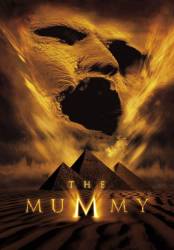Trivia: According to director Stephen Sommers, Universal Studios phoned him the morning after the film's release and said "We need another one."
Trivia: Production designer Allan Cameron found a dormant volcano near Erfoud in Morocco where the entire set for Hamunaptra could be constructed.
Trivia: Anck Su Namun's body paint took 6 hours to apply each time.
Trivia: Almost all of the muzzle-flashes in the film were digitally added, for two specific reasons. The first being that sometimes muzzle-flashes simply don't show up on film. And second, due to the environment in which the film was made, sand would constantly jam-up the guns the production was using, often in the middle of a shot.
Trivia: The soldier-mummies were not in the original script. Instead, Jonathan would accidentally bring to life a giant statue. It was cut for the enormous cost the computer effects for the statue would have incurred, and replaced with the soldier-mummies, since they could be accomplished mainly with old-school suit effects mixed with only minimal CG for specific shots.
Trivia: The 1999 film was not a remake of the Boris Karloff classic, but a remake of the 1968 film McKenna's Gold which starred Gregory Peck and Omar Sharif, thinly disguised and transferred from the American southwest to the valley of the Nile.
Trivia: Somewhat ironically, the mummy's actor Arnold Vosloo really didn't like the look of the CGI mummy when he is first awakened. He felt the design was a little hokey and over-the-top. (Although he did like the look of the later "stages" the mummy takes on as he begins to regenerate).
Trivia: The location name "Fort Brydon" comes from the character "Colonel Brydon" who appeared in Stephen Sommers' earlier movie The Jungle Book, played by Sam Neill.
Trivia: Director Stephen Sommers has said that part of the reason he wanted to work on this film was because the original 1932 version of the movie was the only classic Universal monster movie to scare him as a child. He thought Dracula was a little too sexy and cool to be totally scary, while Frankenstein was more tragic and sad than frightening... whereas he found the original mummy just plain old creepy.
Trivia: One of the background extras in the film was unknowingly given the exact same cloak worn by Alec Guinness in the original "Star Wars." It had inadvertently been mixed in with various generic monk robes at a costume company that works on film and television productions, and was later rented out to this film. It was identified a few years later as the "Star Wars" robe and sold in an auction for over $100,000, making "The Mummy" its last confirmed on-screen appearance.
Trivia: Tom Cruise was reportedly offered the role of Rick O'Connell, but turned it down. He would later go on to star in the 2017 reboot eighteen years later.





